
Corte is a commune in the Haute-Corse department, on the island of Corsica, France.

Calvi is a commune in the Haute-Corse department of France on the island of Corsica.

Transport express régional is the brand name used by the SNCF, the French national railway company, to denote rail service run by the regional councils of France, specifically their organised transport authorities. The network serves French regions; Île-de-France (Transilien) and Corsica (CFC) have their own specific transport systems. Every day, over 800,000 passengers are carried on 5,700 TER-branded trains.

Établissements Billard was a French railway rolling stock construction company founded in 1920 and based in Tours. It specialised in light railbuses and metre gauge and narrow gauge rolling stock. The business ceased trading in 1956 and later became Socofer.
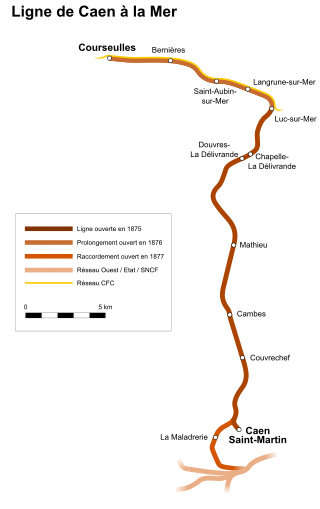
The Compagnie du chemin de fer de Caen à la mer (CM) was an early French railway company.
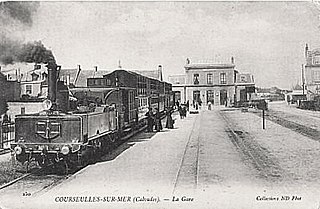
The Chemins de Fer du Calvados was a 600 mm narrow gauge railway in the département of Calvados.

Corsica is an island in the Mediterranean Sea and one of the 18 regions of France. It is the fourth-largest island in the Mediterranean and lies southeast of the French mainland, west of the Italian Peninsula and immediately north of the Italian island of Sardinia, the nearest land mass. A single chain of mountains makes up two-thirds of the island. As of January 2024, it had a population of 355,528.
The French word Autorail describes a single powered railcar capable of carrying passengers. While the concept faded for a while, it has been introduced with a new range of vehicles for both standard and metre gauge lines.

The Chemin de Fer de la Baie de Somme, is a preserved railway in northern France. The railway is managed by a non-profit organization, which runs from March to December between the towns of the Baie de Somme area: Le Crotoy and Cayeux-sur-Mer via Noyelles-sur-Mer and Saint-Valery-sur-Somme, on metre gauge tracks. The association was founded in 1970 and over the years it has become a major player in tourism development in the Picardy coast and is also responsible for the preservation, safeguarding and enhancement of the fleet full of cars, wagons, steam locomotives and diesel locomotives. The line is one of the closest French heritage lines to the UK, Noyelles is 73 kilometres (45 mi) from Boulogne-sur-Mer and 105 kilometres (65 mi) from Calais. A part of the line has dual gauge track, and although forming part of a group of five lines, at least a part of it has always been open to traffic.

Algajola is a commune in the Haute-Corse department of France on the island of Corsica.

Morosaglia is a commune in the Haute-Corse department, on the island of Corsica, France. Since 2015, it is the seat of the canton of Golo-Morosaglia.
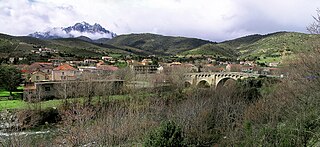
Ponte Leccia is a French village, part of the municipality (commune) of Morosaglia, in the department of Haute-Corse, Corsica. Its name in Corsican language is U Ponte à a Leccia.
The Réseau Breton (RB) is a 1,435 mm, standard gauge, and former 1,000 mm, metre gauge, railway in Finistère, France, with a few kilometres of line in Côtes d'Armor, Ille-et-Vilaine and Morbihan. The hub of the system was Carhaix. The metre gauge lines were built with the capacity to be easily converted to standard gauge if necessary.
The Chemin de Fer du Blanc-Argent is a 1,000 mm gauge railway in the region of Centre-Val de Loire, France, part of which is still open to traffic, whilst another section is now operated as a heritage railway.

The Gravona is a river on the island of Corsica, France. It flows from the center of the island southwest to the Gulf of Ajaccio. Its entire course is in the Corse-du-Sud Department of France. It is 46.4 km (28.8 mi) long. The Gravona Valley conducts the main highway, Route N193, from the capital city, Ajaccio, to the Col de Vizzavona, where it goes through the pass and down to Corte and Bastia. At its upper end the Gravona is a crystal-clear mountain stream cascading over falls and rapids into trout-filled pools. At its lower end nearly all of the Gravona's flow serves to water the densely urban area of Ajaccio.
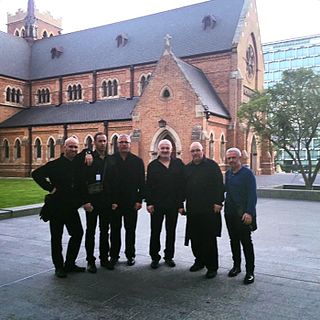
A Filetta is an all-male singing group that performs traditional music from Corsica. It's made up of Corsican singers who try to popularize the traditional Corsican Polyphony singing style. To assert its Corsican identity, the group's name refers to a kind of fern that grows on the island.
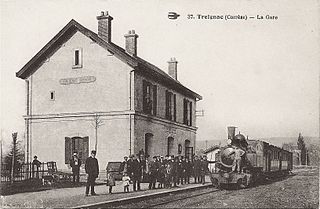
The PO Corrèze (POC) is a former metre-gauge railway in the Corrèze department in central France. The concession was granted to the Chemin de Fer de Paris à Orléans (PO) and constructed by the Société de Construction des Batignolles. Together with the Chemin de fer du Blanc-Argent and the Blois à Saint Aignan, they formed the metre-gauge network of the PO.
The railways in Corsica are metre gauge and are operated by Chemins de fer de la Corse. A list of stations follows.
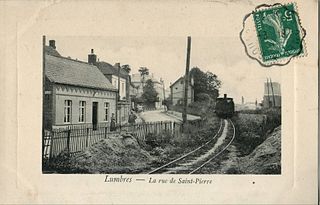
The Chemin de fer d'Anvin à Calais was a 1,000 mmmetre gauge railway from Calais to Anvin, in the Pas-de-Calais department of France. It opened in 1881 and closed in 1955.
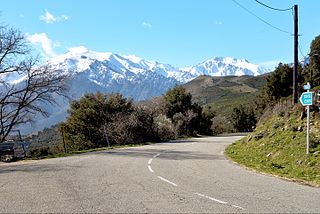
The Col de San Quilico or collo di San Quilico is a mountain pass in the Haute-Corse department of Corsica, France. It is a road pass on Territorial Route 20, between Corte and Ponte Leccia (Morosaglia).























